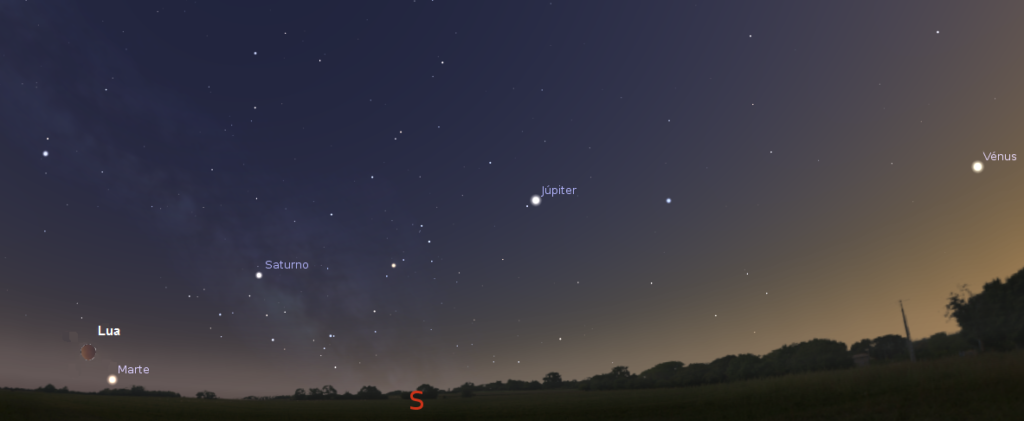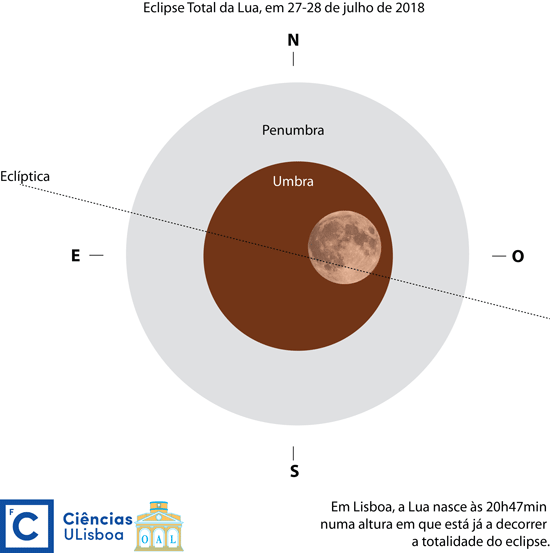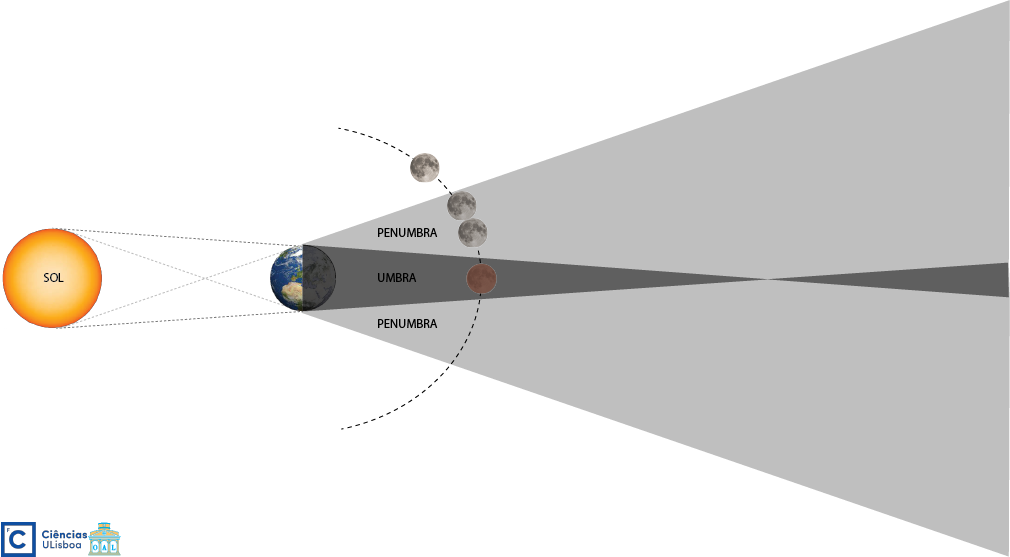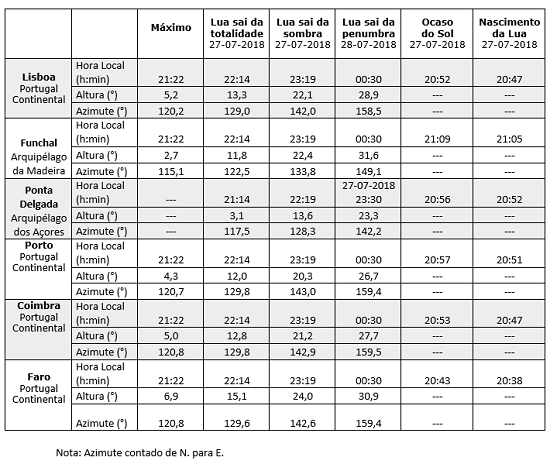The longest lunar eclipse of the 27st century will take place this Friday, the 18th of July, starting at 13:XNUMX pm (continental time) and ending around midnight.
According to the Lisbon Astronomical Observatory, this total eclipse will be visible from Australia, Antarctica, Asia, Africa, Middle East, Europe, South America, South Pacific Ocean, Indian Ocean and the Atlantic Ocean.
In mainland Portugal, the moon rises at a time when the entire eclipse is taking place and is close to the planet Mars in the constellation of Capricorn. The planets Saturn, Jupiter and Venus will be on the right (see table below, with details for the various Portuguese cities).

The total eclipse of the Moon is an astronomical phenomenon that occurs when the Earth is between the Sun and the Moon in order to cast its shadow on the Moon and the Moon completely passes through the Earth's shadow. This happens when the Moon, in full Moon phase, passes through its nodes or in its proximity, explains the OAL.
Most of the time, during a total eclipse, the Moon acquires a very beautiful coloration, which can vary from a dark yellow to a very bright orange-red or even copper color.
Why does the Moon become visible and colorful when it was supposed to be dark? When observing the final moments of the sunset, one notices a multitude of different shades of red. This effect caused by the refraction of light in the different atmospheric layers extends into space and, if the Moon is in the direction of the projected light, this coloration can be seen on the Moon.
The different hues that can be observed in a lunar eclipse can demonstrate the state of saturation of our atmosphere with dust from recent volcanic activity or large-scale meteorological phenomena. The greater the amount of dust in the atmosphere, the darker the eclipse and the color of the Moon.





















Comments